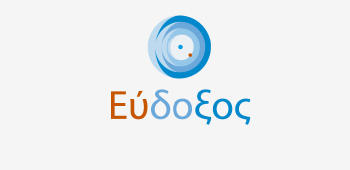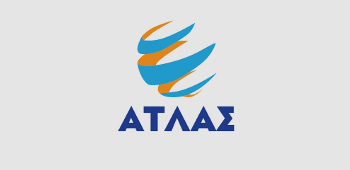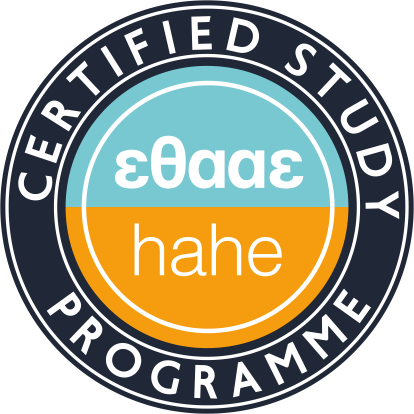Introduction to Project Management in Translation
Teaching Staff: Gene Paraskevi
Course Code: YE-9605
Course Category: Skills Development
Course Type: Compulsory Elective
Course Level: Undergraduate
Course Language: Greek
Semester: Any Spring
ECTS: 2
Total Hours: 2
Erasmus: Not Available
The course examines the principles and methods of translation project management, introducing students to the life cycle of translation projects, project management tools and techniques, and critical aspects such as resource planning, quality assurance, and risk management.
Upon successful completion of the course, the students will be able to:
- Understand the nature and challenges of translation project management
- Recognize the phases of a project from assignment to completion
- Analyze roles and responsibilities in a translation team
- Develop requirements analysis and project planning skills
- Manage human and technological resources
- Apply quality control strategies
- Understand costs and pricing in translation projects
- Develop crisis and risk management strategies
- Effectively manage client relationships throughout a translation project
- Monitor progress and continuously improve the project
Week 1: Introduction to Translation Project Management
Presentation of the course structure and introduction to basic concepts of translation project management. Discussion: What is project management and why is it necessary in translation. Analysis of differences between small and large translation projects. Presentation of examples of translation projects. Theoretical introduction to concepts: Project scope, time constraints, budget, quality. Familiarization with basic project management tools and their use. Case studies of successful and failed translation projects. LABORATORY: Creation of a simple timeline for a small translation project using Excel.
Week 2: Translation Project Life Cycle
Detailed presentation of the phases of a translation project. Understanding the importance of PERT and GANTT diagrams in planning. Familiarization with requirements analysis procedures for translation projects. Methodology for planning and implementing translation projects. LABORATORY: Design of a GANTT diagram for a specific translation project.
Week 3: Project Team Management
Defining roles and responsibilities in the translation project team. Techniques for selecting and evaluating translators and collaborators. Effective communication strategies between team members. Methods for coordinating and managing team performance. LABORATORY: a. Simulation of a translator selection interview. b. Simulation of manager-client dialogue: project requirements analysis.
Week 4: Project Analysis and Planning
Presentation of project analysis examples. Case studies. Defining project objectives and constraints. Drafting a risk management plan. LABORATORY: Creating a translation project management plan.
Week 5: Resource and Tool Management
Presentation of CAT tools: SDL Trados, MemoQ, Translation Memories. Discussion about skills required by translators. Organization of human and technological resources. Creation and use of translation memories. LABORATORY: Introduction to SDL Trados for translation project management.
Week 6: Quality Assurance
Presentation of QA tools: Xbench, Verifika. Discussion of basic quality standards in translation (ISO). Implementation of quality assurance systems at all stages. Implementation of verification and validation procedures. Use of automated quality control tools. Conducting quality inspections. Editing, Proofreading, and LQA procedures. Organization of feedback and improvement of deliverables. LABORATORY: Simulation of translation correction with tools.
Week 7: Financial Management
Analysis of costing methods for translation projects. Discussion on the connection between quality and cost. Budget preparation and financial resource management. Pricing and negotiation strategies with clients. Monitoring and controlling costs during project execution. LABORATORY: Creating a budget for a multilingual translation project.
Week 8: Crisis and Risk Management in the Translation Process
Identifying and evaluating potential risks in translation projects. Presentation of crisis examples: Delivery failure, quality issues. Development of risk prevention and management strategies. Planning alternative scenarios and emergency plans. Systematic monitoring and reassessment of risks. Discussion: How to identify and solve problems. LABORATORY: Risk analysis and creation of a response plan.
Week 9: Project Monitoring and Evaluation - Client Communication
Development of effective communication strategies with clients. Management of client expectations and requirements. Negotiation and contract techniques. Effective complaint management and dispute resolution. LABORATORY: Drafting an offer and negotiating with a client.
Week 10: Progress Monitoring
Presentation of project monitoring methods: Dashboards, progress reports. Discussion: Why continuous evaluation is critical. Implementation of monitoring and reporting systems. Preparation of progress reports. Analysis of deviations between objectives and actual results. Definition and measurement of key performance indicators (KPIs). Analysis and evaluation of the project's progress. Taking corrective measures and adapting plans. LABORATORY: Creating a progress report and presenting it to the team.
Week 11: Change Management
Recognition and evaluation of needs for changes in the project. Implementation of change control and approval procedures. Assessment of the impact of changes on the schedule and cost. Updating and adapting plans and documents. LABORATORY: Managing a scenario of changes in an existing project.
Week 12: Project Delivery Procedures
Preparation and delivery of final deliverables. Preparation of final documentation and reports. Evaluation of goal achievement and client satisfaction. Recording lessons learned and best practices. LABORATORY: Preparing a project delivery folder and final report.
Week 13: Reflection and Future Trends
Overall assessment of the concepts and practices of the course. Analysis of current trends in translation project management. Presentation of innovative technologies and future prospects. Discussion of professional opportunities in the field. LABORATORY: Discussion of challenges and best practices in translation projects.
Required Bibliography
- Dunne, K., & Dunne, E. (2011). Translation and Localization Project Management: The Art of the Possible. Άμστερνταμ: John Benjamins.
- Esselink, B. (2000). A Practical Guide to Localization. Άμστερνταμ: John Benjamins.
- Gouadec, D. (2007). Translation as a Profession. Άμστερνταμ: John Benjamins.
- Publications Office of the European Union. (2021). Διοργανικό εγχειρίδιο σύνταξης κειμένων. Λουξεμβούργο: Publications Office of the European Union.
- Matis, N. (2010). Comment gérer vos projets de traduction. Λιέγη: Éditions pro.
Recommended Bibliography
- Pym, A. (2010). Exploring Translation Theories. Λονδίνο: Routledge.
- Drugan, J. (2013). Quality in Professional Translation: Assessment and Improvement. Λονδίνο: Bloomsbury.
- House, J. (2015). Translation Quality Assessment: Past and Present. Λονδίνο: Routledge.
French Bibliography
- DGLFLF. (2015). Mieux comprendre les outils d'aide à la traduction. Παρίσι: Délégation générale à la langue française et aux langues de France.
- Bachelet, R. (2015). "Les fondamentaux de la gestion de projets". MOOC Gestion de Projet. [https://gestiondeprojet.pm/fondamentaux-de-la-gestion-de-projet/]
- Faure, G.O. (2004). "Approcher la dimension interculturelle en négociation internationale". Revue française de gestion, 2004/6(154), 187-199.
- Politis, M. (2007). "Texte juridique et multilinguisme". Cahiers de la MRSH, 49/2007, Université de Caen.
Electronic Resources and Tools
- SDL Trados Studio Documentation [https://docs.rws.com/]
- MemoQ Documentation [https://docs.memoq.com/]
- Project Management Institute [https://www.pmi.org/]
CAT Tools
- SDL Trados Studio
- MemoQ
- Wordfast
- Memsource
- Smartcat
Project Management Tools
- Plunet BusinessManager
- XTRF
- Trello
- Asana
- Monday.com
- Microsoft Project
Quality Control Tools
- Xbench
- QA Distiller
- Verifika
- ErrorSpy
Web Resources
- ProZ.com
- TranslatorsCafe
- Linguee
- IATE (Interactive Terminology for Europe)
- EUR-Lex
Educational Platforms
- SDL Trados Studio eLearning
- MemoQ Academy
- LinkedIn Learning
- Coursera
- Project Management Institute (PMI)
Student evaluation takes place throughout the semester based on their participation in the teaching process and
their response to the assigned exercises. The final evaluation and grading is done exclusively through a written examination (100% of the final grade).
Written examination (100%)
- Theoretical questions with development (50%)
- Practical exercises in translation project management (50%)
The written examination evaluates the understanding of the theoretical approaches presented in the course and the ability to apply them to specific examples and scenarios.
Back
Undergraduate
Secretariat
Galinos Building (1st floor)
Corfu, GR-49132
Open to the public:
Mon, Wed, Fri: 11am - 1pm
Tue, Thu: 11am - 1pm (Erasmus+)
 E-Class Platform
E-Class Platform
 eSecretariat
eSecretariat
 Webmail
Webmail
 Learning Material Management
Learning Material Management
 Internship Portal
Internship Portal
 Library
Library





 Introduction to Project Management in Translation
Introduction to Project Management in Translation
